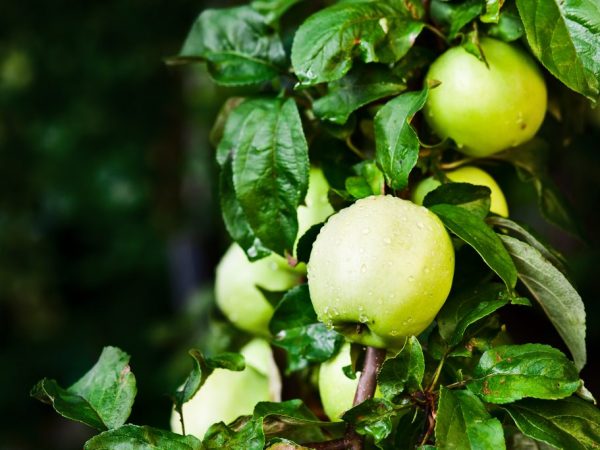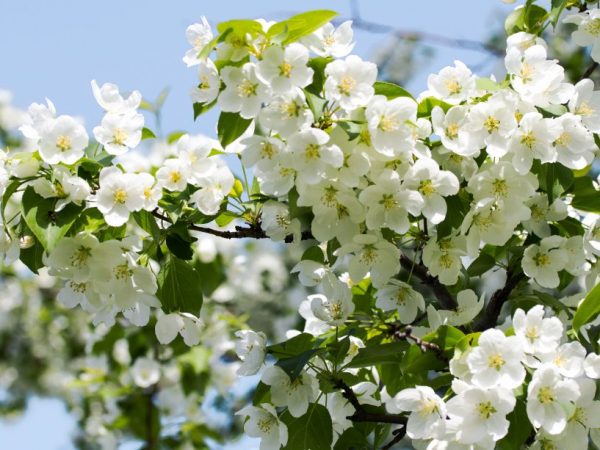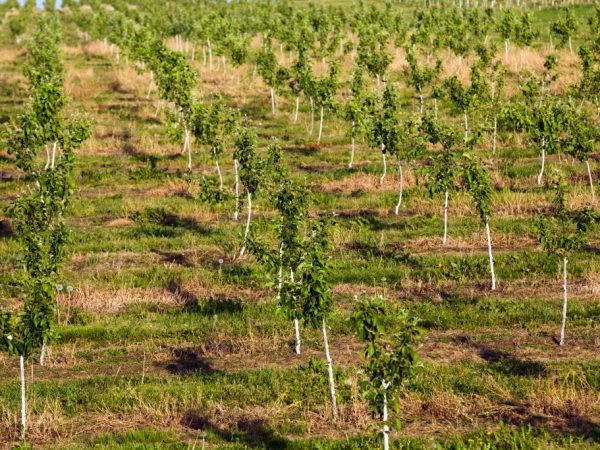Apple variety Golden Delicious
The Golden Delicious apple tree is known all over the world. Based on this variety, many varieties or clones have been bred. This kind of selection is carried out not only in America, but also in other countries.

Apple variety Golden Delicious
Varieties
The apple variety Golden Delicious has many subspecies. Basically, they coincide in description, but there are also significant differences.
- Rangers is a variety with excellent taste and appearance, not prone to so-called "rustiness" of the fruit. Care for this variety is carried out using special technologies, so it is more often grown for industrial purposes.
- Spice - is distinguished by large fruits with pronounced ribbing and a sweeter taste.
- Golden Bee is a variety with beautiful medium sized apples and regular fruiting, frost resistance is observed.
- Rush is a subspecies with an oval crown and high productivity, unpretentious to the composition of the soil.
- Vladimirsky is a variety with large fruits, it is distinguished by a slight blush on one side. The subspecies is resistant to scab and frost, has a regular high yield.
Of course, these are far from all varieties of the Golden Delicious variety. Their number is replenished every year.
Main characteristics
The Delicious variety belongs to medium-sized apple trees (2.5 - 3 m), but it can be grown on dwarf rootstocks (1.5 - 2 m).
When the seedlings are just growing, their crown develops in the shape of a cone. With age, it becomes very thick and takes the shape of a ball, and even later - the branches go down, resembling willow twigs. The leaves of the apple tree are rich green, the flowers are slightly pinkish.
Fruits are round-conical, with light green skin, which turns golden over time.
The pulp is white, very juicy and fine-grained. Fruit weight - from 150 to 200 g.
The taste of apples is the main asset of the variety. They are dessert, with a slight sourness, melon flavor and unsurpassed caramel-chocolate aroma.
Pollination and fruiting
According to the description, this apple tree is self-fertile, therefore it needs pollinators. Suitable: Jonathan, Melrose, Everest, Gloucester, Red Delicious.
The type of fruiting is mixed (apples appear on ringlets, spears, last year's growths).
In the first few years, the tree bears fruit regularly, but in subsequent years, under unfavorable conditions, it may require breaks.
Frost and pest resistance

The tree is not resistant to frost
The Delicious variety is distinguished by medium resistance to frost - it is better to grow it in regions with a temperate climate.
This species is resistant to scab, but can be affected by powdery mildew. The tree may be sick with brown spot, and after a drought - prematurely shedding foliage.
Among insect pests, aphids, flower beetles, ticks and leaf rollers are threatened.
Dignity
- Taste qualities of apples;
- The versatility of fruits - they are good fresh and suitable for any kind of culinary processing;
- High yield (90 -120 kg per tree);
- Long shelf life of fruits;
- During storage, the taste of apples does not deteriorate;
- Early maturity;
- The apples are firmly attached to the branches and do not fall off;
- The fruits have an excellent presentation that does not deteriorate during transportation;
- The apple tree can be grown on a dwarf rootstock, getting a mini version for small summer cottages.
disadvantages
- Self-infertility (the tree needs pollinators);
- Frequency in fruiting is possible;
- Drought sensitivity;
- The need for regular pruning, otherwise the fruits become smaller.
Landing
- In warm and temperate climates, the apple tree can be planted in the fall - in October (a month before the onset of frost).
- In cold regions, planting takes place in the spring - in April.
When choosing seedlings, pay attention to their size, root system, trunk condition, number of branches.
The size of a two-year-old tree is about 1.5 m, and if it is grafted onto a dwarf stock - 1 m. The seedling should have two or three skeletal branches and a well-developed root system.

Trees need sunlight
For planting, choose a sunny place, preferably on the west side. The distance between the trees should be at least 3 m. The depth of the pit is 1 m, the diameter is about the same (taking into account the size of the root).
The hole is dug a month before planting, placing a fertilized soil mixture (soil with humus, ash, potash and phosphorus fertilizers) in it.
Technology
The roots are pre-soaked in water for 10-12 hours. A peg is placed in the hole, to which the tree will be tied.
The seedling is placed inside the hole and the roots are gently straightened, and then covered with earth. After planting and the garter to the peg, watered with 3 buckets of water, and the trunk circle is mulched.
Agrotechnics
Regular watering is an essential part of caring for a young apple tree.
In the first two months, watering is carried out several times a week (depending on the weather). As it grows older, it is watered less often - several times per season, but in abundant quantities.
The soil of the trunk circle is regularly loosened and weeded from weeds. Top dressing is applied in spring - during the first loosening, before and after flowering, in summer - in June, in autumn - after harvesting.
For full fruiting, the apple tree needs crown thinning and sanitary pruning. In the spring, the crown is formed and the frozen branches are removed, at the end of autumn, dried and damaged branches are cut off.
For the winter, the tree is insulated and wrapped from rodents using burlap, polyethylene, pieces of rough cloth, spruce branches.
Annual pest control measures include regular weeding and loosening of the soil, fertilizing with potash and phosphorus fertilizers, spraying, and burning discarded leaves.
Testimonials
According to most gardeners, Delicious apples are fully consistent with the description of the variety. They grow tasty, juicy and aromatic.
The long storage period allows you to feast on dessert fruits until next spring.
However, if the storage facility does not maintain high humidity (80-90%), the fruits begin to wither.
Some gardeners note that with a bountiful harvest, apples lose a little in size. They can also become shallow during dry periods with irregular watering.
According to some reviews, the trees planted in the northern part of the garden do not produce as sweet fruits as those that grow on the sunny side.
Many gardeners emphasize the importance of pruning for this variety - it affects the taste and size of apples, the regularity of fruiting and the health of the tree itself.

